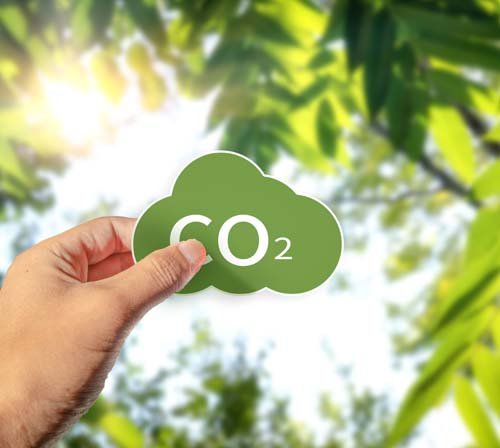An Economic Instrument in Europe’s Environmental Policy: Carbon Border Adjustment Mechanism
The fight against climate change cannot be a struggle of one nation alone. It requires building partnership structures. It is a problem for all of us and requires all parties to be part of the solution. When all parties embrace this struggle, it will be possible to say that positive steps have been taken.
Carbon Border Adjustment Mechanism (CBAM) is a legal arrangement through which the European Union (EU) forces other parties to take steps for the climate. The EU wants to impose stricter “carbon reduction obligations” on its industry while raising its own climate targets. But on the other hand, it does not want its industrialists to pack their bags and migrate to other countries due to these environmental standards. He calls this “carbon leakage”. Carbon leakage also means economic loss for the EU. The EU does not want to suffer the economic losses that would result from the polluting industry migrating to another country instead of complying with environmental standards.
To prevent this, the EU has come up with a new formula: Level the playing field at all costs!
Which conditions?
It tries to equalize the conditions for environmentally friendly production inside and outside the EU. According to this idea, the price paid by a producer in the EU and a producer outside the EU for the greenhouse gas emissions generated during production should be the same. If the producer is within the borders of EU, it will produce within the EU’s Emissions Trading System, which has been in place since 2005. This means that it must reduce its greenhouse gas emissions and pay for the emissions it cannot reduce.
If the producer is outside the EU and exports products to the EU, it will have to pay at the customs border for the carbon emissions it has not paid for in its home country. In effect, this burden is placed on the importer in the EU who enters the EU through customs. The importer will naturally pass this burden on to the producer from whom he buys the product.
In this way, the producer in the EU will be able to compete with producers outside the EU.
Transition Period
On October 1, 2023, the transition period of the CBAM started. During the transition period, industrialists exporting products to the EU have to report the embedded carbon in the iron-steel, cement, aluminum, fertilizer, hydrogen and electricity products they ship. The question they need to answer is: What is the amount of greenhouse gas emissions generated during the production of the listed products?
The transition period will last until 2026. The main obligation during this period is to report embedded emissions. The first reporting period will end on January 31, 2024. From 2026, carbon certificate payments will start for the declared emissions. The CBAM aims to incentivize producers sending products from outside the EU to reduce the embedded carbon in their products in order to pay less carbon certificate payments.
In other words, financial mechanisms are used to decarbonize production.
In 2026, when carbon certificate payments begin under the CBAM, the EU will start to raise the bar and tighten the conditions in its emissions trading system.
Payments for embedded carbon in products exported to the EU must be equal to carbon payments for production within the EU.
Initially, the CBAM will be applied to sectors with high carbon emissions and a high risk of carbon leakage: Cement, iron and steel, aluminum, fertilizer, electricity and hydrogen. This will cover more than 50% of the emissions covered by the EU emissions trading system (ETS).
The aim of the transition period is to provide a learning environment for importers, producers and competent authorities and to gather information on the level of embedded emissions. This will enable improvements to be made when the mandatory period begins.
Compulsory Period
Starting January 1, 2026, importers will have to report annually on the amount of products they imported into the EU in the previous year and the greenhouse gas emissions contained in those products. They will then have to submit the corresponding number of GHG certificates to the competent authorities. The price of the certificates will be based on the weekly auction prices of EU-ETS allowances. Free allowances under the EU-ETS will be abolished with the full implementation of the CBAM in the period 2026-2034.
Before the end of the transition period, the functioning of the CBAM will be reviewed to determine whether it is appropriate to expand the product system boundaries or to include new products.
Countries to be affected by the CBAM
It is expected to affect the EU’s largest trading partners – Russia, China, the UK, Turkey, Ukraine, Ukraine, India, South Korea and the US – the most.
Although the EU has been accused of being “discriminatory” by some countries due to this regulation, countries are trying to make preparations for the issue.
As part of these preparations, Turkey is also working on establishing its own emissions trading system and creating carbon markets.
Prof. Dr. Güray Salihoğlu
Bursa Uludag University
Department of Environmental Engineering

